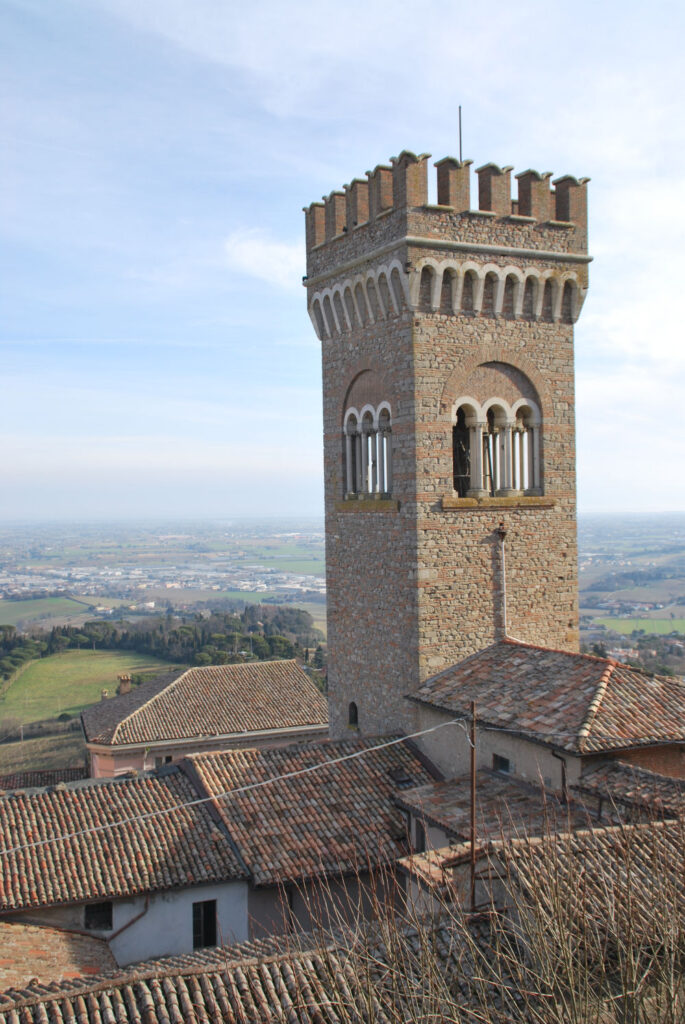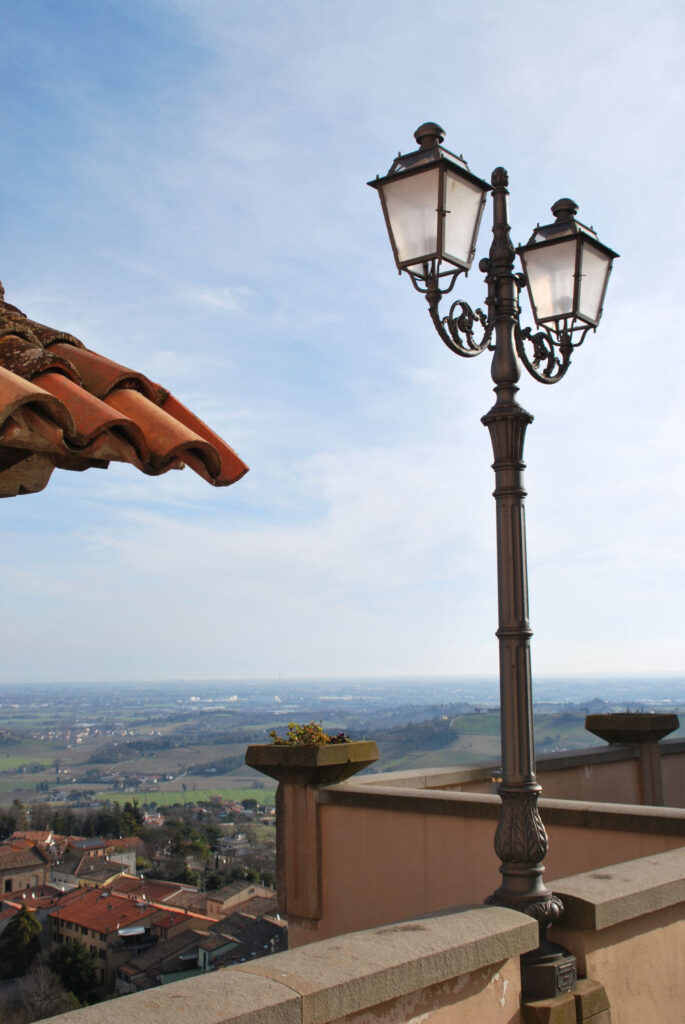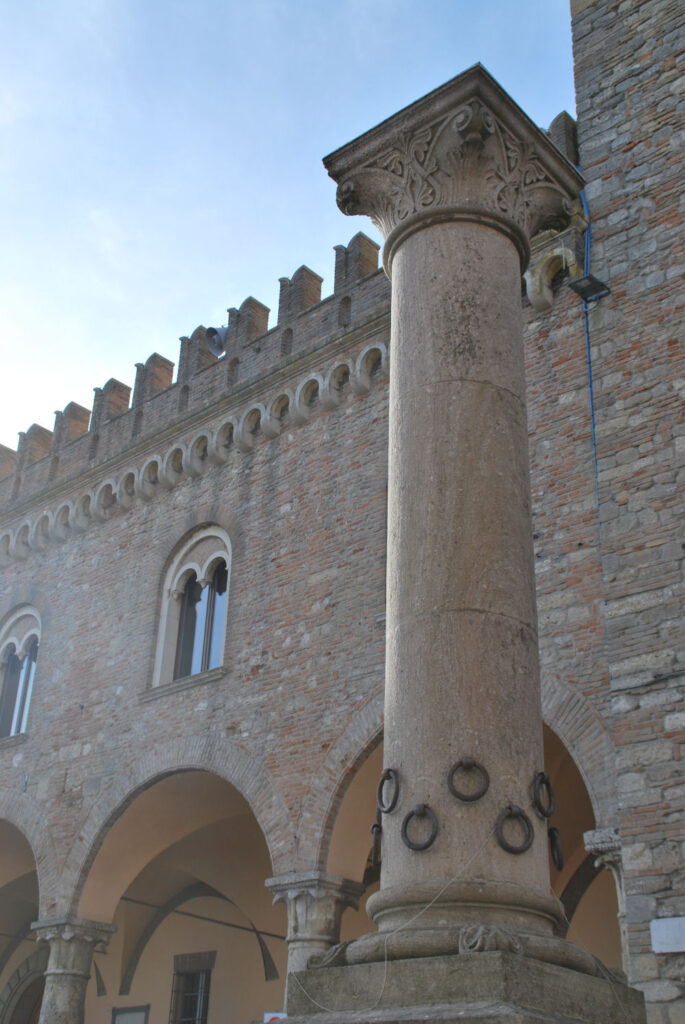Territory

Bertinoro and its hills: a land of hospitality, winemaking tradition and good living, a unique landscape between the Apennines and the sea. A territory to be discovered.
The medieval town
Bertinoro is a typical medieval town in central-northern Italy, located on the first hills between Forlì and Cesena.
It sits on the top of mount Cesubeo, protected by a majestic 10th century fortress and surrounded by a system of walls, towers, palaces and fortifications that are still clearly visible today. As you get lost in the cobbled alleys of the centre, pleasantly crowded with taverns and bistros, the atmosphere can become romantic, especially at sunset.
Due to its privileged position, overlooking the Adriatic coast and the eastern plains of the region, it is known as the "balcony of Romagna".

The natural landscape
The Bertinoro area extends from mount Maggio, on the eastern side, and the thermal town of Fratta, on the western side, with the gourmet city of Forlimpopoli - downstream - and the ancient church of Polenta - upstream.
The landscape is characterised by a series of reliefs and slopes which connect the Savio and Bidente valleys. Among vineyards and farmhouses, between woods and creeks, traces of the Spungone, a highly distinctive geological formation of this Apennine section, are easy to observe. Spungone shows up with typical calcareous outcrops of an ocher color and a spongy appearance, revealing its sedimentary nature, as a legacy of ancient marine organic deposits. It is therefore not unusual to come across fossil remains and shell fragments.
This particular soil profile grants excellent fertility conditions - well known and appreciated for centuries - but also of an evident fragility: the Bertinoro district therefore emerges as an area with a very high winemaking vocation, although in need of conscious and sustainable agricultural practices.

Crossroads of hospitality
Bertinoro is one of the gates of Romagna - a historic stopover for merchants, wayfarers and monks, not far from the Via Romea Germanica, one of the most important communication axes between Rome and central Europe. More locally, it intercepted the dense economic and social relations between Tuscany and Ravenna, being halfway between the basin of the Tiber river, the Po river delta and the Venetian lagoons.
On these traits, Bertinoro has built upon itself a strong reputation as a worthy and hospitable city, strengthened by eminent literary testimonies - above all, Dante's Comedy - and iconically represented in the Hospitality Column. The Column, a thirteenth-century monument of great symbolic value, also tells a notable historical fact, a leap of goodwill and civic spirit in the restless era of lordships. As the Column was therefore erected, each family set a bronze ring on it – which had to be unrecognizable by the traveler; the ring chosen by the wayfarer to secure his mount would have indicated, by honorable fate, the family that would have welcomed him.

City of wine
For a long time, a picturesque series of stories and documents has celebrated Bertinoro as a city of good wine, sometimes bordering on legend. The Bertinoro area is regularly recorded in the 19th century censuses as strongly suited to quality winemaking, in a combination of fertility and healthiness of its air, soil and waters.
The peculiar vine of this area is Albana, in a particular native varietal. The Albana di Bertinoro produces a white berried grape with long and loose bunches, of an intense yellow color, painted with gold and amber. It results in full-bodied and complex wines, expressing great elegance and finesse at the same time. These typical characteristics, driven by the great determination of local winemakers, allowed Albana di Romagna to become the first Italian DOCG - Controlled and Guaranteed Designation of Origin - in 1987.
In recent decades, Bertinoro has launched a strong valorisation of Sangiovese, the giant of central Italy's viticulture, investing in agronomic and oenological projects of great consistency with the terroir. Vinified as a single-variety or in a blend with international vines, subjected to refined passages in wood, brought to drying: a growing interest in Sangiovese di Romagna is attracting the attention of wine lovers from all over the world, in the wake of the most high-sounding Tuscan labels based of this vine, such as Chianti Classico, Brunello di Montalcino, Nobile di Montepulciano and Morellino di Scansano.



